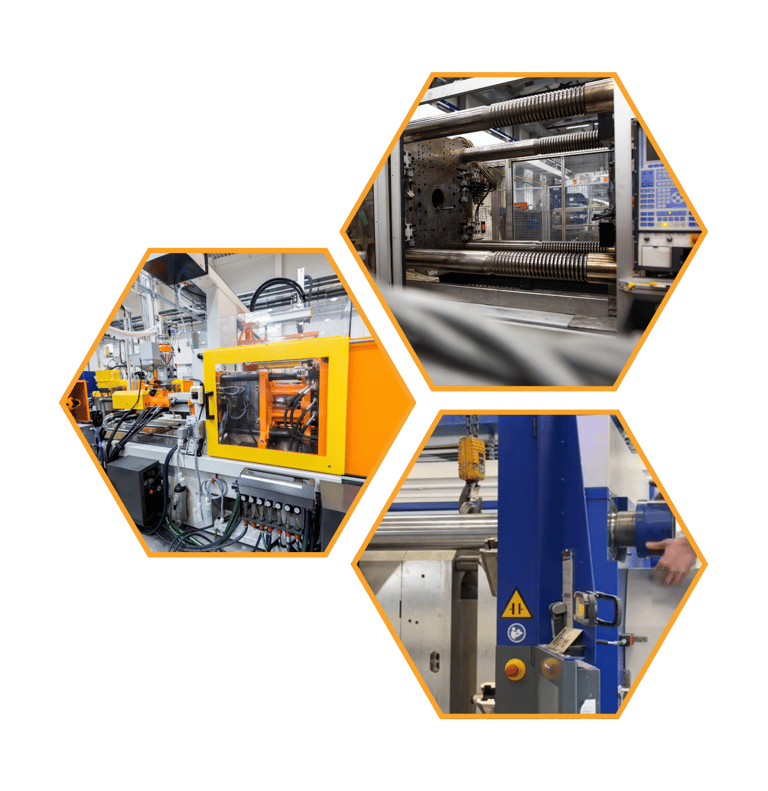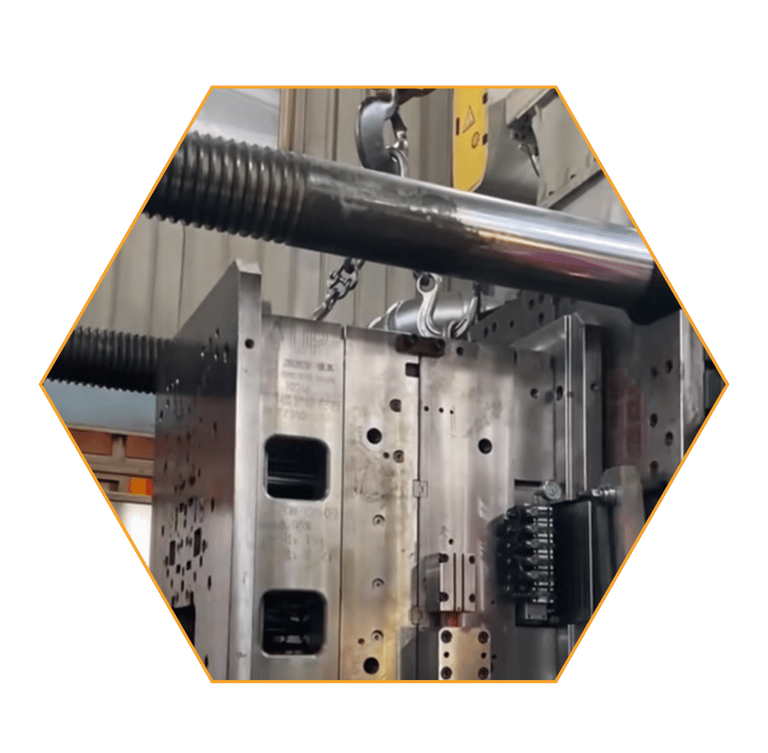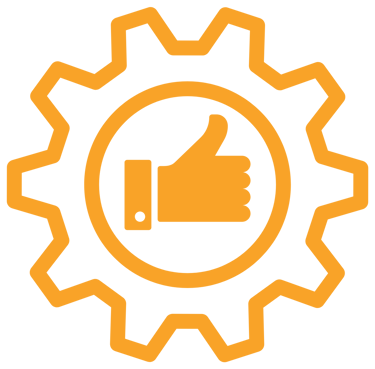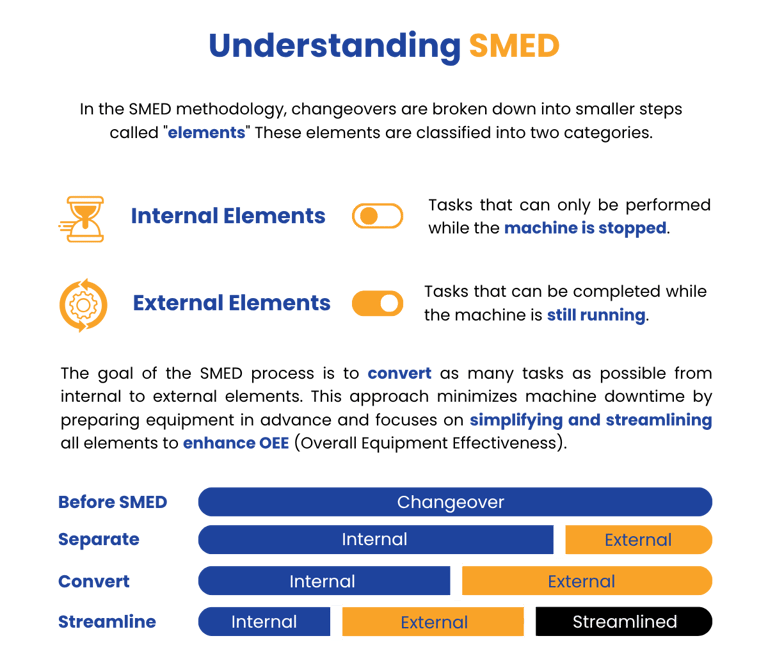

CASE STUDY SMED
(Single-Minute Exchange of Die)
In the highly competitive automotive industry, where every minute of production counts, implementing the SMED (Single-Minute Exchange of Die) methodology minimized downtime and streamlined mold changeovers, resulting in higher productivity, improved efficiency, and greater operational flexibility.
Frequent downtime during mold changes delayed production schedules.
Reduced machine utilization impacted overall efficiency.
Inefficiencies led to increased operational costs and missed opportunities production targets.

CHALLENGE


SOLUTIONS
Conducted a time study to identify and address inefficiencies in the mold changeover process.
Applied SMED principles to separate internal and external setup activities.
Introduced quick-change tooling systems and visual management for tools and materials.
Standardized procedures and provided operator training to ensure consistency.
RESULTS


Mold changeover times were reduced by 50%, increasing machine utilization.
Improved production flexibility, supporting smaller batches and diverse product demands.
Significant cost savings were achieved through reduced downtime and optimized workflows.
Enhanced operator efficiency and confidence, enabling sustained performance improvements
OUTCOME
The successful application of SMED established a robust framework for continuous improvement, helping the production team exceed efficiency goals while maintaining high-quality standards.


WHAT IS SMED ?
TARGET APPLICATIONS
WHAT SMED DOES?
SMED (Single-Minute Exchange of Die) is a Lean Manufacturing methodology designed to minimize mold changeover times in injection molding processes. By standardizing and streamlining changeover procedures, SMED reduces:
Changeover downtime,
Increases machine utilization,
Enhances production flexibility.
(Single-Minute Exchange of Die)
SMED focuses on reducing mold changeover times by standardizing and streamlining the operations.
This involves separating internal and external setup tasks, utilizing quick-change tooling systems, and training operators on efficient changeover techniques.




KEY BENEFIT
This approach minimizes downtime, enabling faster production shifts and greater flexibility for smaller batch sizes or custom orders.




CONTACT
If you're interested in hearing more about the way we work, have a business proposal, or are interested in making a purchase, we'd love to hear from you.
